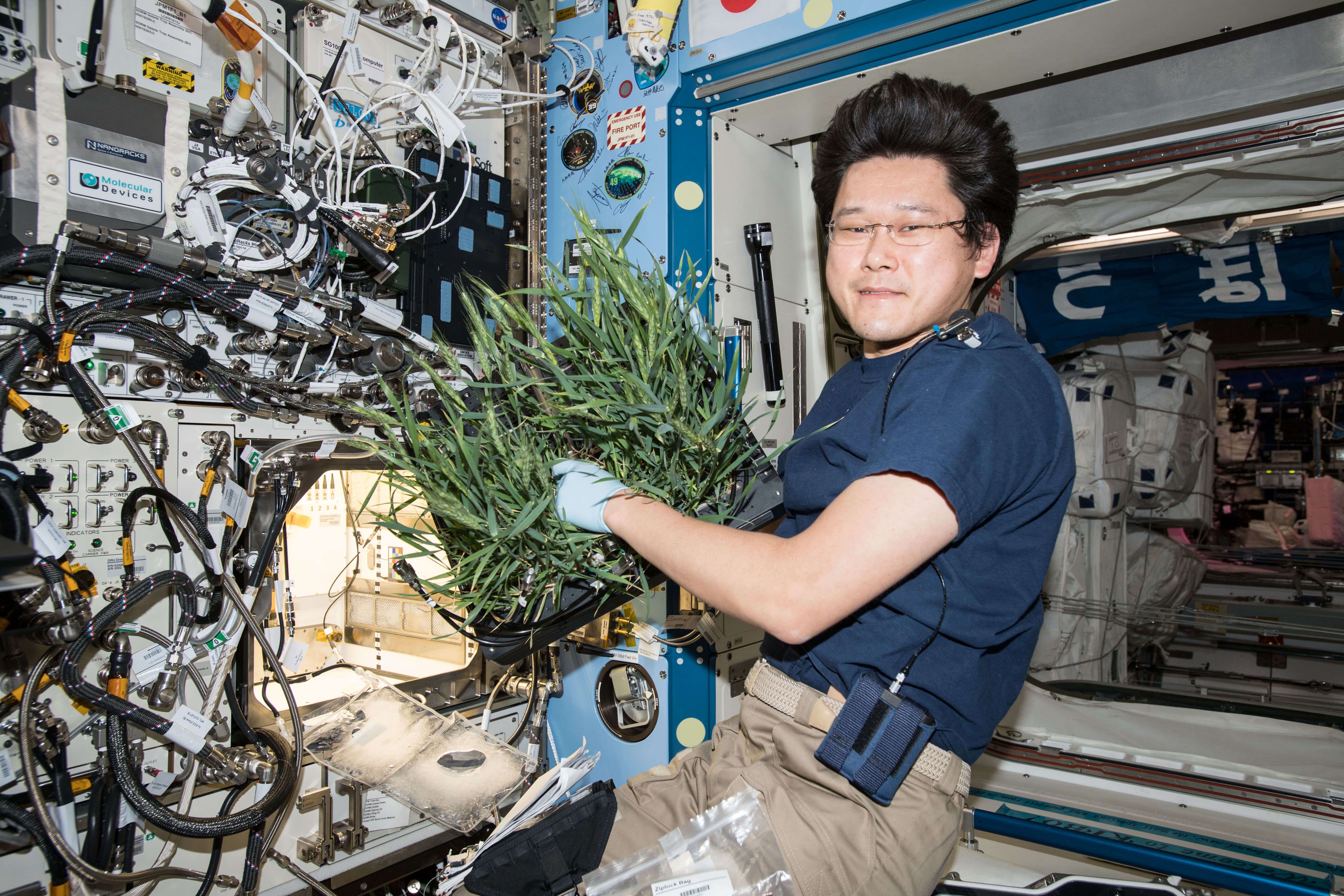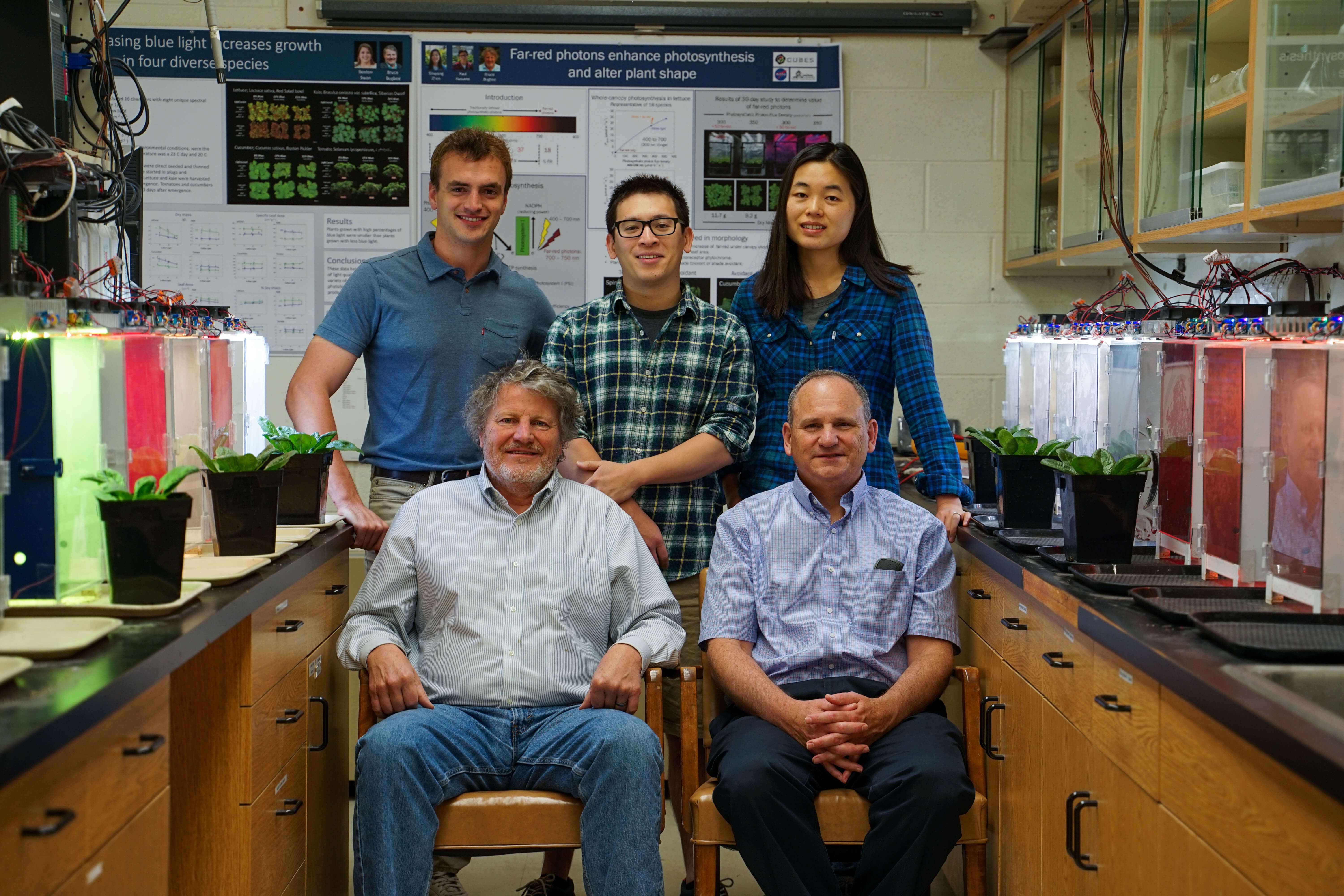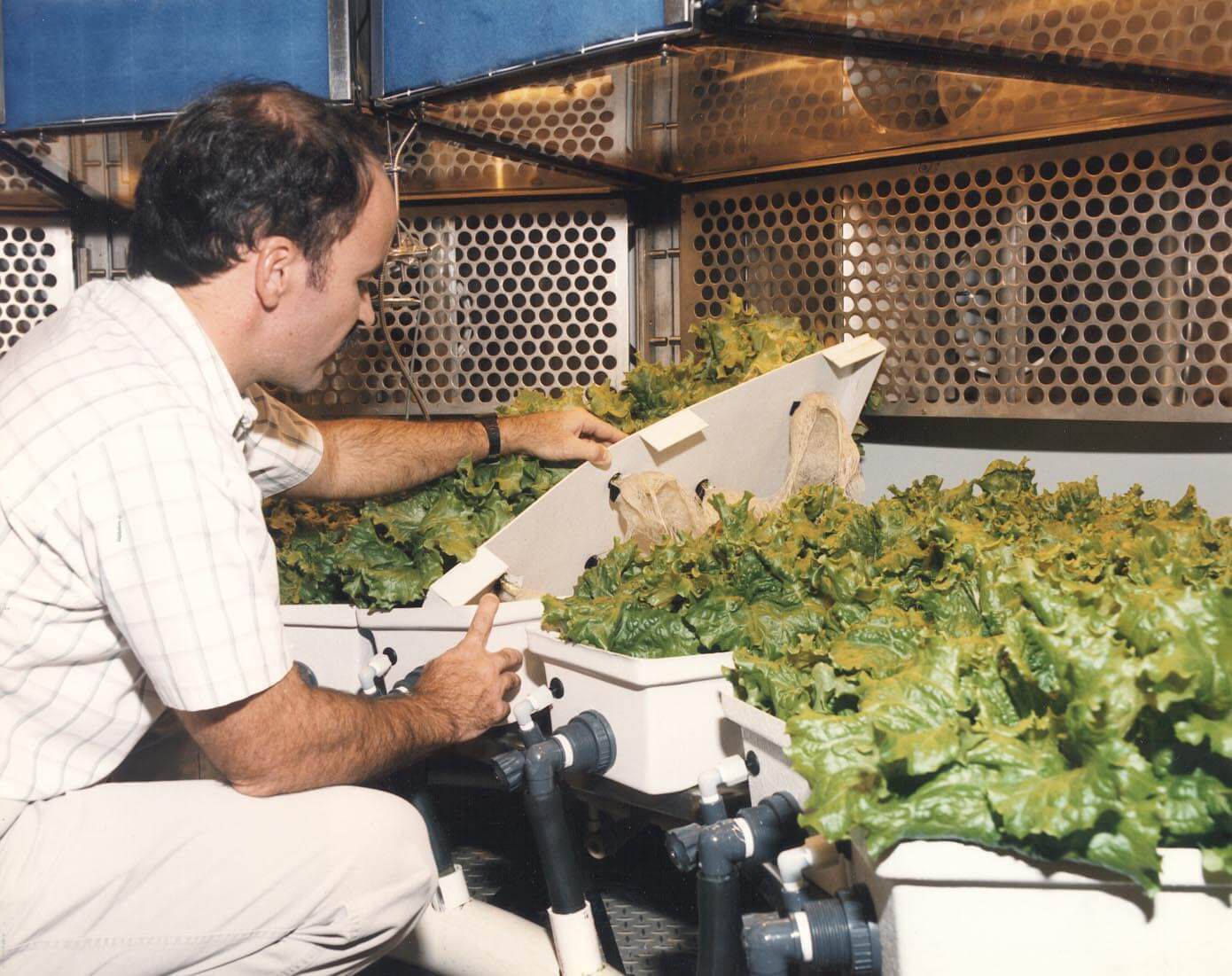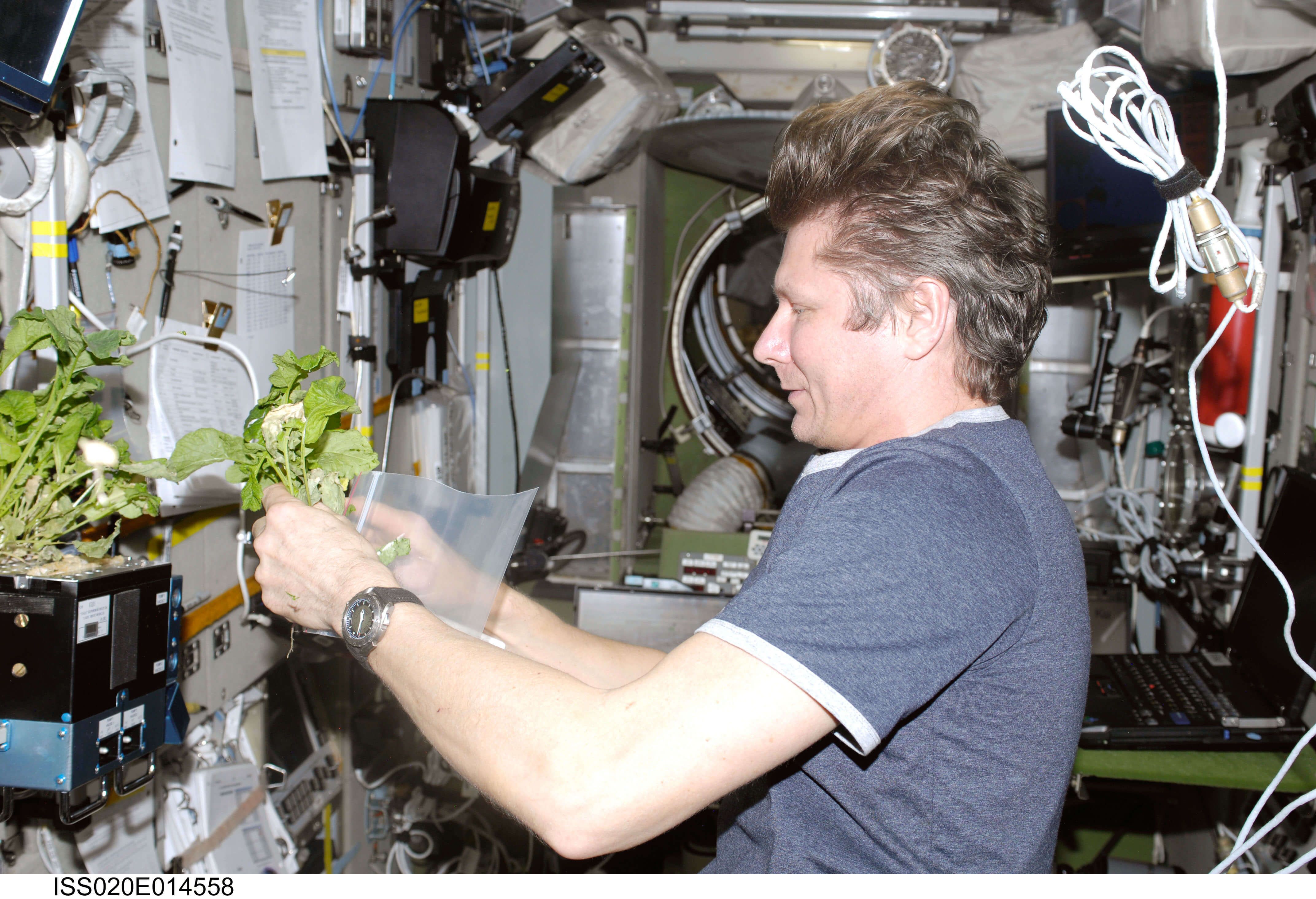The Next Giant Leap for Mankind
Author
Published
9/10/2019
Too expensive; Not our top priority; Wasteful; Not in our best interest. Those were some of the comments being published by critics in the 1960s as America was pushing full-throttle into the space race on its way to the moon. The recent celebration of the 50th anniversary of the famous Apollo 11 Moon landing by Neil Armstrong and Buzz Aldrin, has given us opportunities to reflect back on what was learned then, where society is going in the future, and the role Utah and agriculture will play in the future.
It is a common human trait that the further we get away from series of events, the easier it is to think back on them with rose-colored glasses. Whatever notable achievement, journey, or milestone, it may appear as easy, inevitable, or always worth the cost. Such has been the case in looking back at the Moon landing, but the event that has been called “the most significant event of the 20th century” was far from a sure-thing.
The first challenge facing our nation after President Kennedy proclaimed in 1961 that America was to land on the moon before the decade was out was the unfamiliarity of it all. This was brand-new territory the likes of which had only been imagined in science-fiction novels. A recent article in Smithsonian magazine looked at some of the challenges facing the new space program and why its achievements were so notable.
“When President John F. Kennedy declared in 1961 that the United States would go to the Moon, he was committing the nation to do something we simply couldn’t do…[W]hen Kennedy asked Congress to send Americans to the Moon before the 1960s were over, NASA had no rockets to launch astronauts to the Moon, no computer portable enough to guide a spaceship to the Moon, no spacesuits to wear on the way, no spaceship to land astronauts on the surface (let alone a Moon car to let them drive around and explore), no network of tracking stations to talk to the astronauts. … [A]nd it isn’t just that we didn’t have what we would need; we didn’t even know what we would need.”
Beyond those pesky technological and space-age details of actually being able to do what they were trying to do, the issue of funding and priorities came up again and again. Weren’t there better things to spend precious budget money on rather than some space dream? The 1960s were turbulent times, with fierce debates over the war in Vietnam and Civil Rights. Was space the issue that should take up so much money and effort?
“Americans constantly questioned why we were going to the Moon, when we couldn’t handle our problems on earth,” the Smithsonian article continued. Even public opinion polls were quite mixed or downright negative about the need to go to the Moon in the mid-1960s. That all changed on that summer evening in 1969, when an estimated 500 million people watched Neil Armstrong take those first steps onto the Moon.
Among those viewers were many young adults and children, who undoubtably were inspired by the black and white images they saw on the television. Two such young people, Bruce Bugbee and Lance Seefeldt, now find themselves at Utah State University as professors and researchers, working on what could be the next ‘giant leap for mankind’.
“I was in elementary school at the time, and I remember those black and white images from TV of astronauts on the moon,” said Lance Seefeldt, a professor of biochemistry at Utah State University (USU). “I was nine-years-old and that had an impact on a whole generation of scientists. It really changed and drove science for decades.”
Bugbee agreed about the importance watching the moon landing had on his life, which he watched when his mother called him in from waterskiing as a youth. A quick search of the internet can reveal the tangible products and concepts that are now commonplace, which came as a result of the Apollo 11 moon landing, and the many space programs before and since. Items such as CAT scans, infrared ear thermometers, home insulation, computer microchips, real-time computing, memory foam, scratch resistant lenses, smoke detectors, the ‘Jaws of Life’, and land-mine removal have all come as a result of the space program.
In addition to the tangible results, are the countless numbers of future scientists and researchers that were inspired by the landing of 1969.
Bugbee, a professor at USU and director of its Crop Physiology Laboratory, was extensively quoted in the media following the release of the 2015 film The Martian, in which a future astronaut-botanist needed to grow food on mars. Understandably so, viewers of the film were curious as to whether or not the ability to grow crops on mars was more science than fiction.

“When people ask “how do you justify working on this when we have so many problems on Earth’, the best answer I can ever give is to invite them to come with us to talk about this in a classroom, and see the kind of interest it inspires in students,” Bugbee said.
Seefeldt agreed to the inspirational power the Moon landing had on society, including many that are now working in the industry.
“I was in elementary school at the time,” Seefeldt said. “I remember those black and white images from TV of astronauts on the moon. I was nine-years-old and that had an impact on a whole generation of scientists. We’re of that generation. It really changed and drove science for decades.”

A Whole New World
Just as the Moon landing 50 years ago inspired a generation of scientists and researchers, the work being done today to explore new frontiers is potentially inspiring a new generation of space explorers for the next great adventures – Mars. In the same way traveling to the moon stretched humanity, today’s goal of traveling to Mars is pushing our society in ways never thought of – and the state of Utah gets a front-row seat by having researchers like Bugbee and Seefeldt at USU involved.

The challenge of hindsight is that society can make the mistake of assuming the achievements of the past as inevitable – “of course we were going to land on the Moon.” But many of those landmark events were in doubt up to the moment they were achieved. Such is the case for going to Mars.
In the years since the Moon landing, space exploration has progressed to the point that many view it as commonplace to move a rocket from earth to the International Space Station (ISS). Bugbee and Seefeldt would warn against any assumptions that traveling to Mars will be commonplace.
“If we imagine starting from campus in Logan, is that going from Earth to the ISS is like going back and forth to downtown Logan,” Bugbee said. “Going to the moon is like going back and forth to the Salt Lake airport. Going from here to Mars is like going to Antarctica. It’s a big difference.”
One of the great challenges to exploring Mars is the sheer distance from Earth. Most anyone who has gone camping can relate to having forgotten something at home that would have proven useful on the trip. Now expound that on an astronomical level and you can imagine one of the big hurdles facing the Mars mission.
Because of the length of time to get there and the premium placed on available space in a rocket, the need to be able to grow food, build tools, and produce other items on Mars becomes a necessity. The only catch is that it’s not as easy as running to the store or even your own shop in the backyard. This also applies to medicine to treat space explorers who may get sick.
“It’s roughly a two-year process to get things [to Mars], so our group has a division for making food, another for making pharmaceuticals, etc.” Seefeldt said. “You don’t have time to ship medicine there. By the time you got it there to fight an infection the person would be dead.”
The way to work around this is to plug into a bacteria the gene for acetaminophens (Tylenol) or for an antibiotic. This could then be inserted into plants, which would then provide both food and medicine to whoever ate it. Seefeldt added that another division is working with polymers, to lead to 3-D printing to make tools and other items.

Bugbee explained how their researchers have become quite good at growing lettuce, and are able to insert genes into the lettuce like acetaminophen, so you get your food and medicine at the same time. Seefeldt also explained how bone loss is a problem for those living in space long-term, but that working with a hormone that stimulates bone growth and then inserting that hormone into food plants, you can again fight against that problem.
While some of this technology doesn’t sounds like something you saw on the movie The Martian, Bugbee and Seefeldt would be quick to say the movie makes things a little easier than it may appear – and in some instances, not very accurate.
To start off, much of this technology is only a year or two old, and is still being fine-tuned. Take the matter of soil. In your backyard, you go and prepare your grow box or backyard garden spot by removing weeds, adding some organic matter like mulch or compost, maybe test the soil and add some nutrients to it, and then plant your crops. On Mars, it doesn’t quite work that way.
“People say ‘the soils on Mars’ but our goal really is to make soil on Mars because there is none there now,” Bugbee said. “What’s there now is just sterile dust. We need to make it alive by putting organic matter into it. The Sahara Desert would be the Garden of Eden by comparison.”
Another idea made simple on the movie is the idea of growing food in a greenhouse. Martian farmers would run into two problems in this scenario. The first being that basketball-sized meteors would constantly be a threat because of the lack of atmosphere – a blessing we take for granted here on Earth. The other problem prevented by our Earthly atmosphere is cosmic radiation.
To solve these problems, greenhouses would have to be constructed by borrowing underground, and then inflating a greenhouse. But then how to get energy into the plants, normally supplied by the sun? Researchers are working on using parabolic mirrors and fiber optic cables to focus sunlight above ground, focus in, and deliver it underground with greater efficiency than electric lights.

Nutrients and a lot more
Growing the food is one challenge of space travel – and a significant one. But there are others. What is the number of food crops that are needed to sustain life? Beyond just sustaining, what about the psychological effects of variety. Do you stop eating as well because you’re tired of eating the same five plants every meal for two years? What about the balance of nutrients needed and how those can be supplied by crops? What to do with the residue of growing food and how can you move from having a food system that is 30 or 50 percent efficient, to having something that is 100 percent efficient?
In addition to the questions that come up, Bugbee and Seefeldt share the exciting thing is to see students sit around with a white board and dream up an idea in general terms and then go and then figuring out the details to go do it. While many of these ideas sounds “out of this world”, they will have direct impacts here on earth. If we can grow food on Mars, think about the possibilities back here on earth and how we can help those in food deprived areas.
As a generation was inspired by the moon landing 50 years ago, what will the next generation of farmers and scientists come up with? Only the future will tell, but that future is being made a reality today.
Want more news on this topic? Farm Bureau members may subscribe for a free email news service, featuring the farm and rural topics that interest them most!
